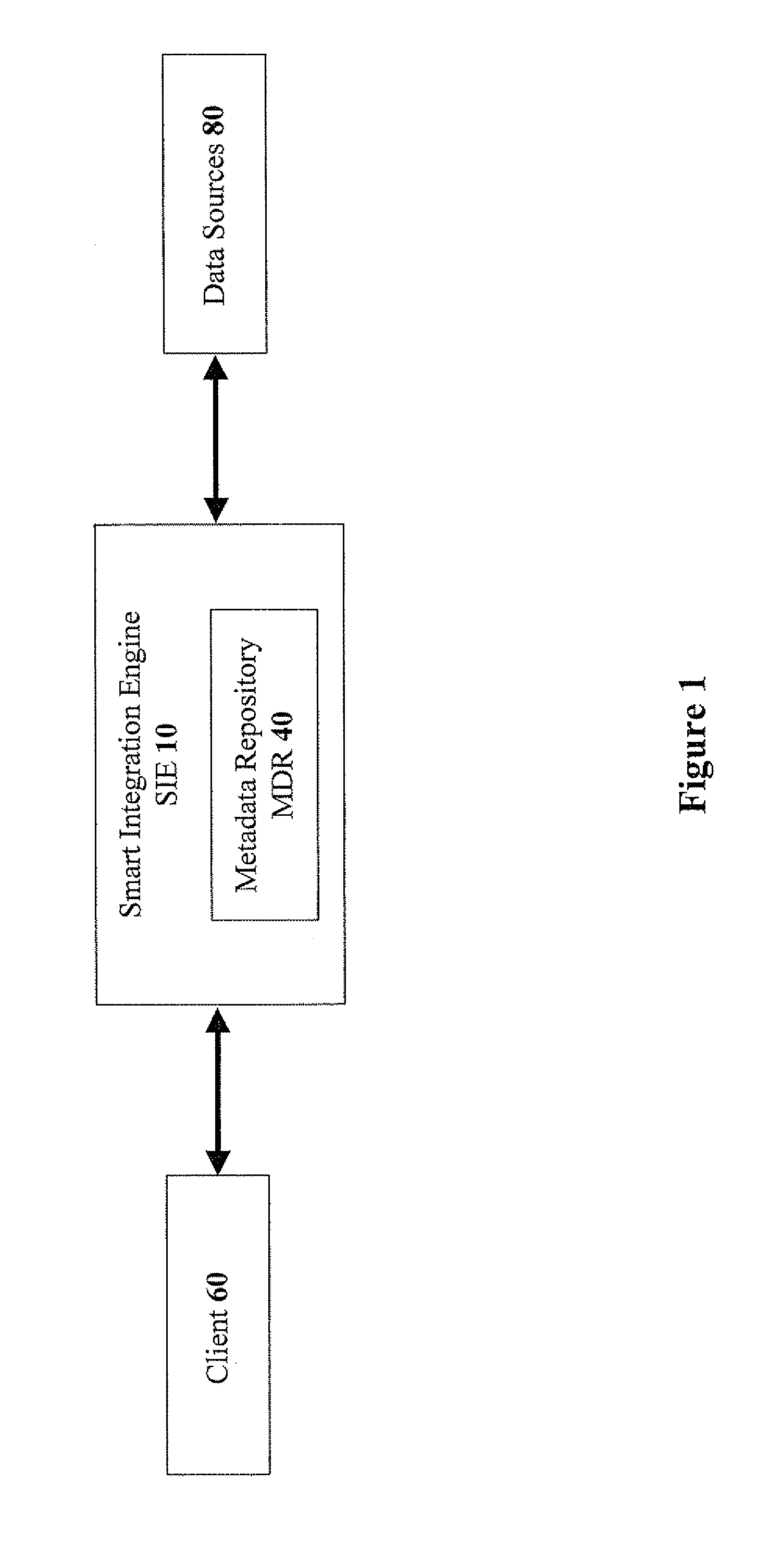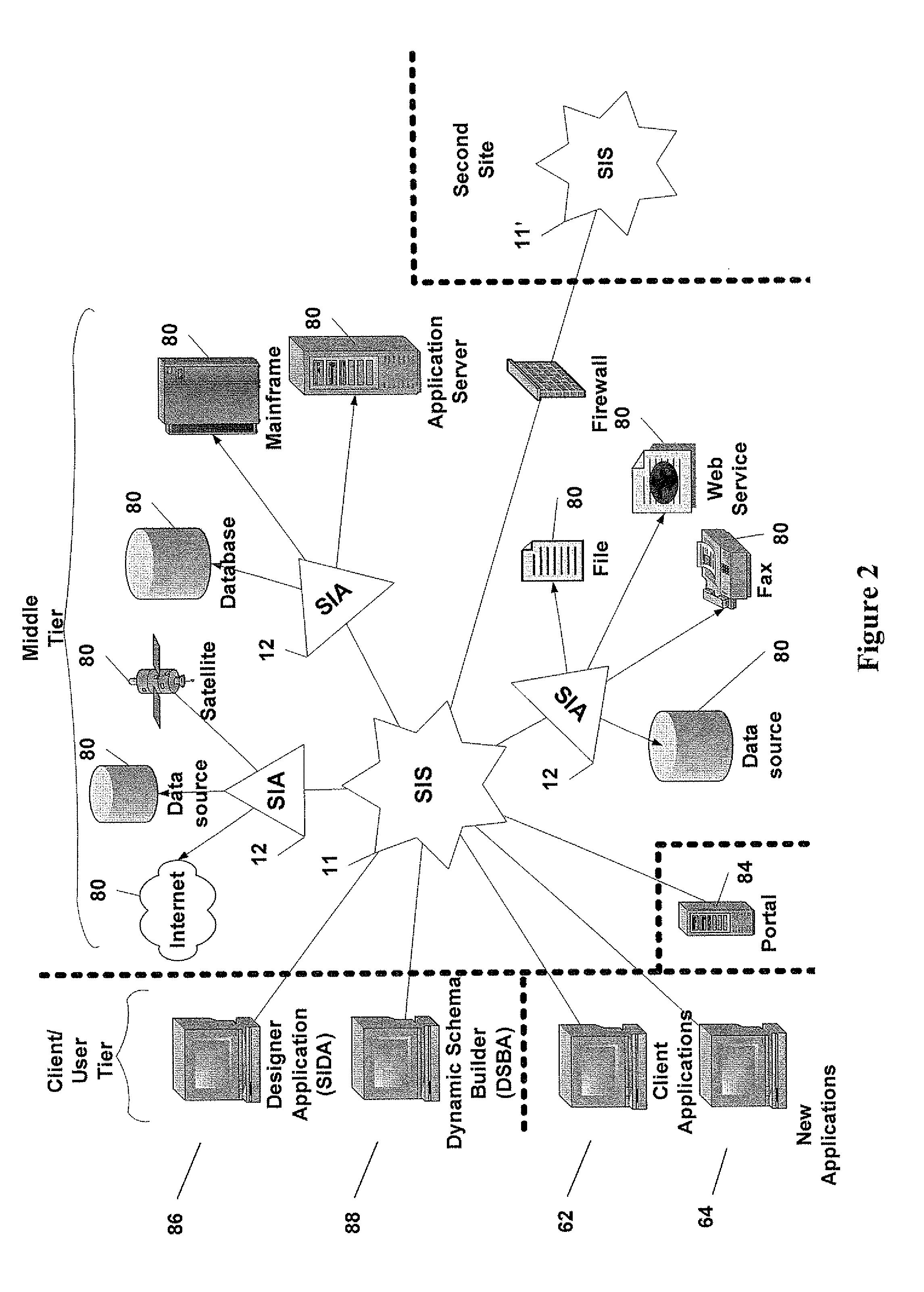Smart Integration Engine And Metadata-Oriented Architecture For Automatic EII And Business Integration
a technology of applied in the field of intelligent integration engine and metadata-oriented architecture for automatic eii and business integration, can solve the problems of inability to automate the eii, the current integration solution is expensive, time-consuming, rigid, etc., and achieves the effect of fast execution
- Summary
- Abstract
- Description
- Claims
- Application Information
AI Technical Summary
Benefits of technology
Problems solved by technology
Method used
Image
Examples
Embodiment Construction
[0108] The present invention relates to systems and methods for automatic data integration among multiple heterogeneous data sources. The principles and operation for automatic data integration among multiple heterogeneous data sources, according to the present invention, may be better understood with reference to the accompanying description and the drawings.
[0109] Referring now to the drawings, FIG. 4 is a simplified schematic block diagram of the internal components of the SIS, according to preferred embodiments of the present invention. A request manager (RM 21) is the first tier of SIE 10, and is responsible for queuing DSS requests A of FIG. 3A (i.e. the client service calls). RM 21 provides SIE 10 the ability to process the DSS inside requests A without any intervention or disruption asynchronously. RM 21 utilizes an asynchronous and a synchronous APT. Using the asynchronous API (in Http or JMS format, for example), client application 62 sends DSS request A without waiting t...
PUM
 Login to View More
Login to View More Abstract
Description
Claims
Application Information
 Login to View More
Login to View More - R&D
- Intellectual Property
- Life Sciences
- Materials
- Tech Scout
- Unparalleled Data Quality
- Higher Quality Content
- 60% Fewer Hallucinations
Browse by: Latest US Patents, China's latest patents, Technical Efficacy Thesaurus, Application Domain, Technology Topic, Popular Technical Reports.
© 2025 PatSnap. All rights reserved.Legal|Privacy policy|Modern Slavery Act Transparency Statement|Sitemap|About US| Contact US: help@patsnap.com



